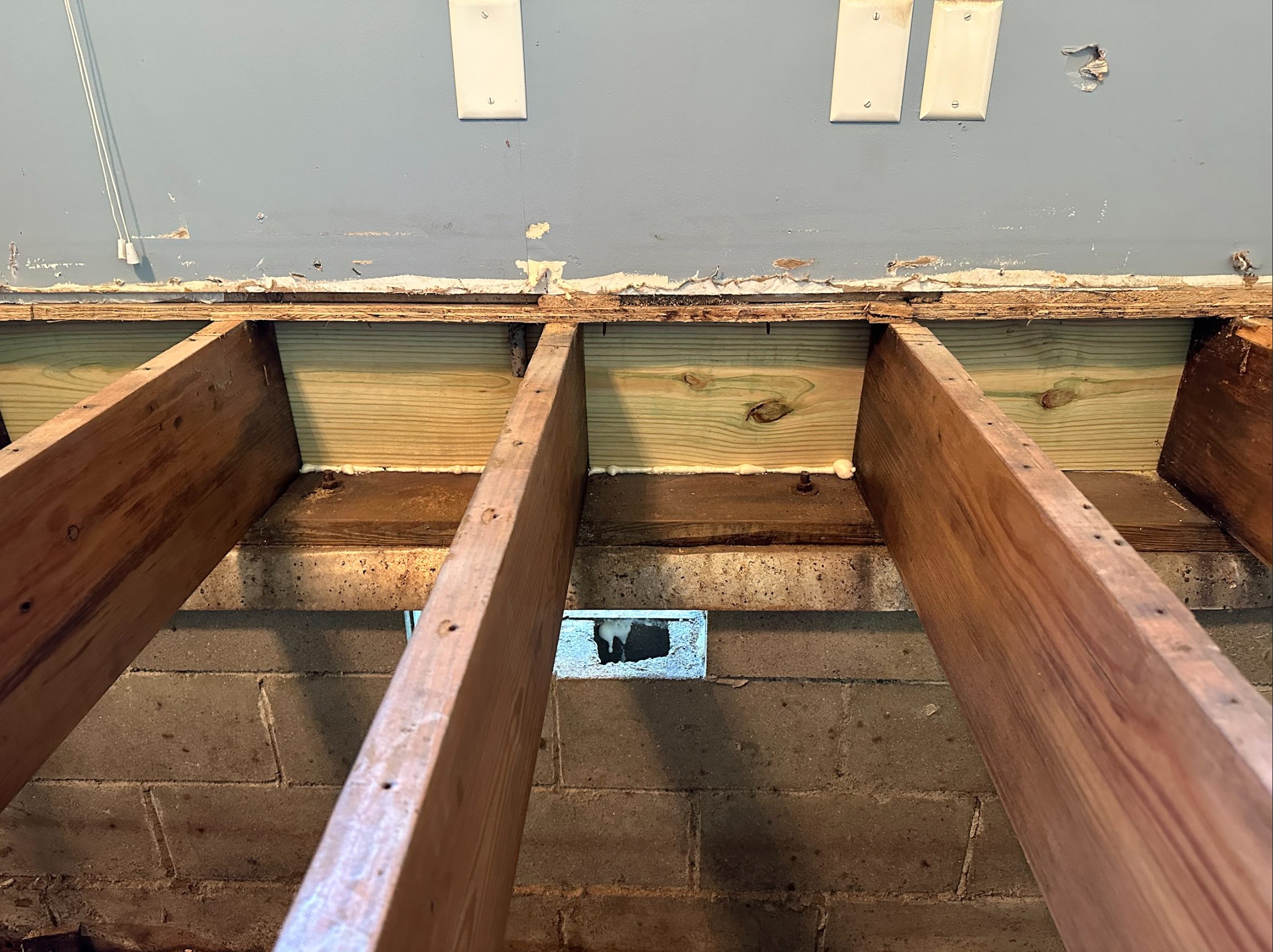Do You Know
Wood rot isn’t just an eyesore—it’s a serious problem that can weaken your home’s structure. If left untreated, wood rot, often referred to as dry rot, can cause floor joists to break down, leading to sagging or collapsing floors. Addressing foundation wood rot promptly is crucial to prevent further structural damage and costly repairs.
Dry rot is caused by a type of fungus that grows in damp, humid places like your crawl space. The fungus starts as tiny spores that grow and spread, destroying the strength of your wood, and leaving beams cracked and brittle.
If you’ve noticed bouncy or sagging floors, brittle wood, or strange growths on your support beams, call us today. Helitech Waterproofing & Foundation Repair can quickly identify and fix wood rot issues, protecting your home and your family’s safety. Call today for a free inspection and get in touch with our dry rot specialists.
Dry rot treatment isn’t one-size-fits-all because every home is unique. However, there are two primary methods for addressing wood rot that can be tailored to your specific needs:
This method, known as “Sistering”, is a cost-effective method to stabilize structural damage and prevent wood rot. We remove the damaged wood, treat it to stop fungal growth, and attach a new “sister” beam to restore your floor’s strength and integrity.
For severe damage, we replace the affected boards by installing temporary floor jacks, removing the damaged joists, and installing new load-bearing joists. Once complete, the floor jacks are removed, ensuring a stable foundation.
To learn more about how we repair sagging floors, click here.

Replacing damaged boards is only part of the solution. To fully repair wood rot and prevent it from returning, it’s important to address the source of the problem—excess moisture in your crawl space. A complete solution includes a three-part system: a vapor barrier, a ventilation system, and a dehumidifier.
These tools work together to block moisture, improve airflow, and maintain healthy humidity levels. By removing the conditions that cause wood rot, you can protect your home’s structure and improve its overall air quality. Effective crawl space solutions are key to preventing future problems.
My husband and I were very pleased with the professionalism of Helitech representative. He was very polite and courteous. I was impressed with his ability to explained a solution to our basement problem with a complete assessment.
St. Peters, MO, USA